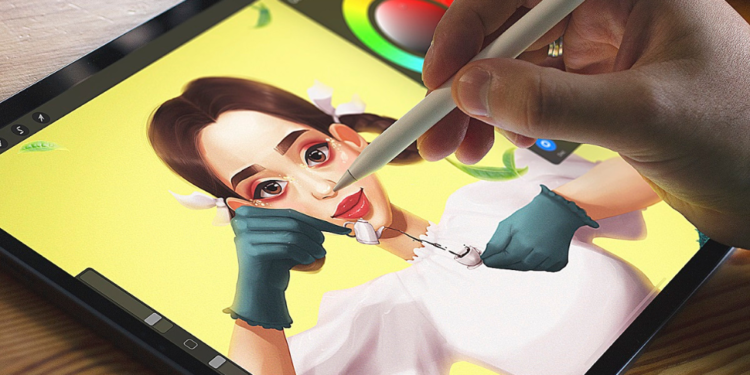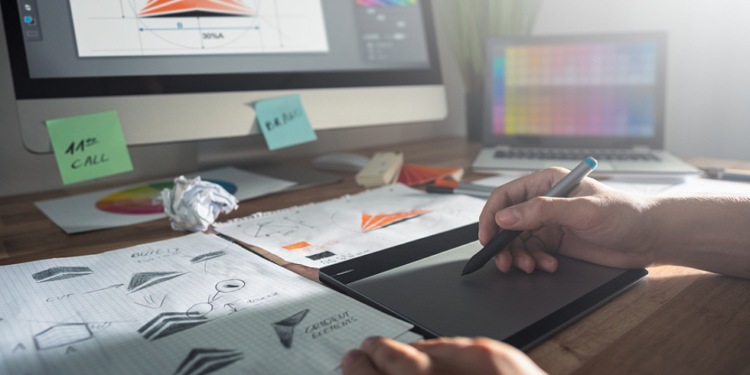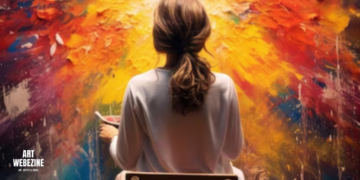In the ever-evolving landscape of artistic expression, the convergence of digital art and technology stands as a pivotal transformation. Digital painting, as a prominent facet of this evolution, has unlocked boundless creative prospects. Meanwhile, traditional art techniques remain a steadfast tribute to history and craftsmanship.
The journey of art’s evolution, from its conventional roots to the dynamic realm of digital art and technology, underscores the dissolution of boundaries. It showcases the profound societal impact and offers a glimpse into the harmonious future where both digital art and traditional techniques coexist seamlessly.
Traditional Techniques: Preserving the Richness of History and Craftsmanship
Traditional techniques serve as a revered bridge connecting us to the past, preserving the profound richness of history and the unparalleled craftsmanship of generations gone by. Each stroke of the brush, chisel mark, or delicate weave of a tapestry holds within it a narrative of cultural heritage and human creativity. These methods, refined over centuries, encapsulate the essence of artistic evolution, embodying the spirit of bygone eras.
Through traditional techniques, art becomes a living time capsule, allowing us to witness the artistic journey of our predecessors. The tactile engagement of handcrafted mediums be it the layering of oil paints or the sculptor’s mastery over stone infuses each piece with a distinct authenticity that resonates with our collective past.
Preserving traditional art techniques honors the legacy of art, fostering a deep appreciation for the intricate craftsmanship that has shaped civilizations. It invites us to glimpse into the minds and hearts of those who came before, fostering a profound connection across time and cultures. As we continue to explore the frontiers of artistic expression, these techniques stand as a testament to the unwavering bond between history, craftsmanship, and the enduring power of human creativity.

: Embracing Innovation and Unlimited Possibilities
Digital art emerges as a transformative force, embracing innovation and unlocking a realm of boundless possibilities. It transcends the boundaries of traditional mediums, inviting artists to explore uncharted territories through the marriage of technology and creativity. In this digital landscape, the canvas becomes a virtual playground where imagination knows no bounds.
Artists wield digital tools like brushes, seamlessly blending hues of light and shadow to craft intricate visual symphonies. The pixel becomes a versatile instrument, enabling the fusion of photography, painting, and graphic design in ways previously unimaginable. The malleability of digital creations fosters a continuous cycle of experimentation, pushing artists to redefine their artistic boundaries.
The very essence of digital art lies in its adaptability from interactive installations to immersive experiences, it captivates a modern audience attuned to technological marvels. Through digital art, artists manifest concepts that challenge convention, pushing the envelope of what’s conceivable. As society hustles into a future characterised by technological marvels, digital art stands as a testament to human innovation and our ever-evolving relationship with creativity.
The Blurring Boundaries: Hybrid Approaches in Modern Artistic Practices
In the captivating realm of modern artistic practices, the boundaries between traditional techniques and digital innovations dissolve, giving rise to a captivating fusion that defies categorization. This harmonious convergence, often referred to as hybrid approaches, embodies the essence of artistic evolution in the digital age.
Artists seamlessly traverse the tactile world of physical mediums and the ethereal landscapes of digital realms, crafting masterpieces that bear the imprint of both past and the future. Charcoal sketches find new dimensions through digital enhancement, while sculptures come to life through interactive projections. This fluid interplay invites a reimagining of what constitutes art, encouraging a dynamic dialogue between tradition and innovation.
Hybrid approaches amplify creative potential, offering artists an expanded toolbox to realise their visions. This intermingling of techniques not only challenges artistic norms but also engages viewers in novel ways, fostering a deeper connection between art and the audience. As boundaries continue to blur, these avant-garde expressions illuminate the transformative power of embracing diverse methods, ultimately redefining the very fabric of modern artistic endeavours. The hybrid revolution underscores the beauty of adaptability, reminding us that innovation thrives at the crossroads of tradition and progress.
The Impact on Artists and Society: Changing Perceptions and Accessibility to Art
The advent of digital art has catalysed a profound impact on both artists and society, assisting in a paradigm shift in the perception and accessibility of art. Artists now navigate a digital canvas, redefining their creative journey by harnessing cutting-edge tools that amplify their expressive capacities. This transformation has democratised the artistic process, enabling a broader spectrum of individuals to participate and contribute, transcending geographical and socio-economic barriers.
Society witnesses an evolution in how art is perceived and engaged with. Digital platforms facilitate the democratisation of art appreciation, making masterpieces accessible to a global audience with a simple click. The immersive and interactive nature of digital art experiences has engendered a dynamic relationship between viewer and artwork, challenging traditional notions of passive observation.
Moreover, the fusion of technology and art has kindled conversations that prompt us to contemplate the very essence of creativity. As technology becomes an inseparable facet of artistic expression, our understanding of art’s boundaries expands, inviting introspection and discourse.
In this era of digital prowess, artists and society find themselves on a collaborative path, reshaping artistic narratives and dismantling barriers that once restricted engagement. The impact reverberates through the interconnected threads of culture, enabling a more inclusive and vibrant artistic landscape.
Evolving Palette: Navigating the Ever-Changing Landscape of Painting

In an era where technological advancements are reshaping every facet of human existence, the realm of art is no exception. The fusion of art and technology has given rise to a mesmerising evolution, redefining the boundaries of creativity and expression. The influence of technology on painting is now more evident than ever, with artists harnessing innovative tools to produce captivating works that challenge traditional norms and captivate audiences worldwide.
One striking example of this symbiosis is “Machine Learning Portrait” by Robbie Barrat, a masterpiece created using artificial intelligence. Trained on a vast dataset of human portraits, the AI-generated a painting that straddles the line between realism and uncanniness. Similarly, “The Next Rembrandt” by Microsoft showcases the prowess of AI, 3D scanning, and machine learning in recreating a Rembrandt self-portrait with astonishing accuracy.
Artist Akiko Okamoto took a different approach with “Flowers in a Vase with Artificial Intelligence,” employing generative adversarial networks (GANs). This AI technique pits two systems against each other, resulting in a painting that marries realism with dreamlike qualities, blurring the distinction between the tangible and the imaginary.
Beyond these specific examples, technology is influencing painting in a multitude of ways. Digital painting, propelled by sophisticated software, empowers artists to create intricate pieces that push the boundaries of traditional techniques. The rise of 3D printing has introduced a new dimension to painting, enabling artists to craft sculptures and paintings that were once unattainable.
Virtual reality (VR) has taken the immersive experience of art to new heights. Viewers don VR headsets to interact with paintings in a digital realm, transcending the limitations of the physical world and entering a space where imagination knows no bounds.
As technology continues to evolve, so too does the landscape of painting. The integration of cutting-edge tools with artistic ingenuity has ushered in an era of unprecedented exploration, prompting artists to challenge conventions, experiment with new mediums, and create art that resonates deeply with contemporary audiences.
In the years to come, we can expect to witness even more awe-inspiring examples of how technology and painting converge. As these innovative endeavours reshape the art world, they remind us that the marriage of tradition and innovation is where the future of artistic expression truly thrives. The canvas of the future is one where pixels meet paintbrushes, and where creativity is limited only by the scope of human imagination.
Conclusion
In the grand tapestry of artistic expression, the threads of tradition and technology are interwoven in a mesmerising dance. The journey from traditional techniques to the vibrant world of digital art has been marked by innovation, redefinition, and a relentless pursuit of pushing boundaries.
As we stand on the precipice of a new artistic era, let us celebrate the diversity that emerges from this fusion, appreciating the intricate brushstrokes of history as they blend harmoniously with the boundless potential of the digital canvas. Art and technology, once seen as disparate entities, now stand hand in hand, illuminating the path toward a future where creativity knows no bounds.






